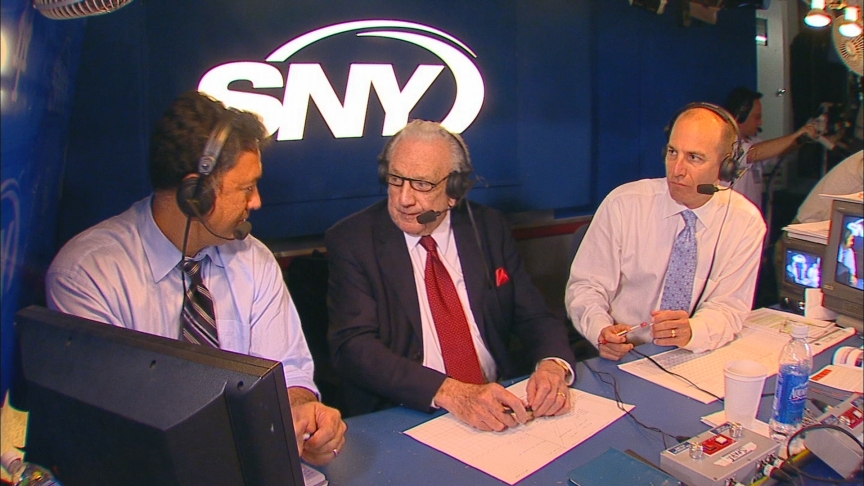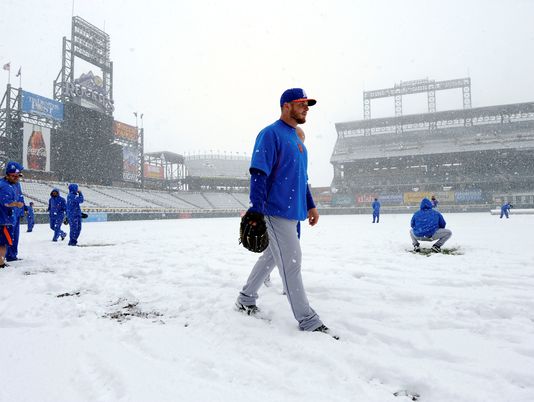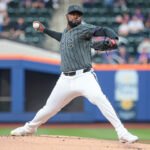
“On a cold night you have to hit the ball 25 feet farther. So, in other words, if the fence is 338 feet and you hit the ball 338 feet, you’ll be 25 feet short.” – Ralph Kiner, attempting to explain the effect of cold weather on the flight of a baseball.
The New York Mets and Minnesota Twins played last Friday night’s game in between snowflakes. According to Major League Baseball, the game time temperature was 34 degrees. Pitchers were licking their fingers and blowing hot air into their balled up fists. Infielders were wearing ski caps. The dugouts were filled with hoodies and heated benches. Toasty, right?
“But when you got outside the dugouts, it’s pretty stinking cold,” Mets manager Terry Collins told the media.
In April 1982 a massive snowstorm hit the northeast, wiping out games almost the entire first week of the baseball season in New York, Philadelphia, Pittsburgh, Boston, Cleveland, Chicago and Detroit. The weather was so poor the Yankees returned to Florida while their scheduled opponent, the Texas Rangers, worked out under the stands at Shea Stadium. Meanwhile, the Mets beat the Phillies at Veterans Stadium, 7-2, in the season opener. It was all downhill sledding after that.
The Mets moved on to Chicago, where two snowstorms blasted the city just days before the Cubs scheduled opener. It was 34 degrees – and windy – at first pitch. The maintenance teams shoveled the snow into piles under the seats at Wrigley Field. Not a good idea. Fans pelted Mets players with snowballs, prompting the Cubs public address announcer to appeal to the 26,091 fans: ”Please refrain from throwing snowballs on the field.”
Snow, in April, at the ballpark, isn’t new, but it certainly is unusual looking. David Wright looked like he was posing for a Christmas card …
The cold weather can be dangerous, too.
Former Mets catcher Rick Cerone remembers playing in Toronto in April 1977 as a member of the Blue Jays. The weather was so cold he suffered frost bite on his right hand and he never fully recovered.
”It snowed the first five innings,” said Cerone. “Ever since my hand got frostbitten that day, I’ve had bad circulation in it. Whenever it’s the least bit cold, I had trouble feeling the ball. I use heat packs to keep my hand warm. But that’s what cold weather can do. It’s not just how the cold affects you that day, it’s how it can affect the rest of your career.”
In an interview with the New York Times, Dave Winfield remembered how the cold weather nearly cost him his career. ”My junior year at the University of Minnesota, I was a pitcher as well as an outfielder. We were playing Michigan State in snow flurries and 30-degree weather, when I heard something pop in my elbow. For the next five months, I couldn’t throw a ball 30 feet. I thought I might be through, but lucky for me, my arm came back.”
 Standing in the snow, Sandy Alderson looked across the field searching for the infield diamond. He couldn’t spot it. Earlier in the day he was on Twitter suggesting the conditions were more football than baseball. So, he wondered out loud, if the Mets and Rockies might still play later Monday night?
Standing in the snow, Sandy Alderson looked across the field searching for the infield diamond. He couldn’t spot it. Earlier in the day he was on Twitter suggesting the conditions were more football than baseball. So, he wondered out loud, if the Mets and Rockies might still play later Monday night?
“There isn’t a bright line test,” he said. “Is it 30 degrees? Twenty-eight? Twenty-six? I don’t know where you draw the line.”
The answer: No. We found our bright line. A winter storm warning means no baseball in Colorado. The storm will remain in effect until 6am Tuesday morning.
The Boys of Summer will attempt to play a day-night doubleheader Tuesday at Coors Field. The weather forecast: Cloudy with a chance of snow in the morning. A chance of rain and snow in the afternoon. Highs 37 to 43. Sounds like they’ll be walking a fine bright line again.













